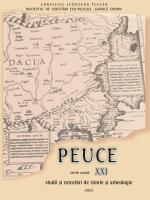Analyse archéozoologique des restes de poisson du tell de Luncavița–Cetățuia (culture Gumelnița, 5e millenaire av. J.-C.)
The Zooarchaeological Study of the Fish Bones Discovered in the Luncavița–Cetățuia tell (Gumelnița Culture, 5th Millenium BC)
Author(s): Valentin Radu, Cristian MicuSubject(s): History, Archaeology, Cultural history, Ancient World
Published by: Institutul de Cercetari Eco-Muzeale Tulcea - Institutul de Istorie si Arheologie
Keywords: Zooarchaeology; Ichtiology; Fish: Eneolithic; Luncavița; resources; Gumelnița culture; Lower Danube;
Summary/Abstract: In this study, fish remains that were taken from the final levels attributed to the Gumelnița culture within the tell-settlement at Luncavița were analyzed. The remains from waste deposits/areas were primarily taken into account. This selection, based on a reliable stratigraphic and chronological classification, allowed us to create, in addition to comparisons, an overview of the fish consumption at the end of the site's inhabitation. Thus, the identified species are present in the Danube and its floodable areas – sturgeon, carp, wels catfish, pike and pikeperch, common bream, asp, tench, roach and common rudd. Fishing took place in the Danube and its branches, especially during the summer. Part of the fish was brought whole to the site and prepared for consumption. The approximate quantity for the researched areas is about 5 tons, catfish having the biggest contribution. The exploitation of aquatic resources proved an important activity for the inhabitants of Luncavița «Cetățuia» that provided, at least during the summer, a source of protein complementary to that obtained from hunting or animal husbandry.
Journal: Peuce (Serie Nouă) - Studii şi cercetari de istorie şi arheologie
- Issue Year: 21/2023
- Issue No: 21
- Page Range: 269-296
- Page Count: 28
- Language: French

